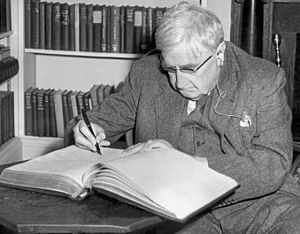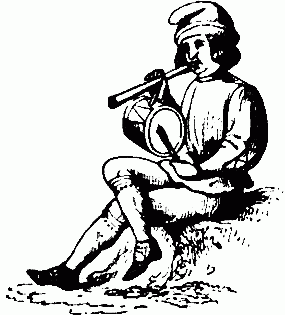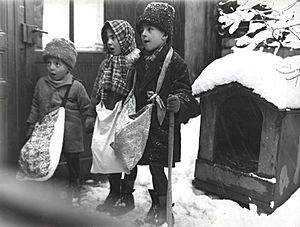Christmas music facts for kids
Christmas music includes all the songs we hear around Christmas and New Year's. This special music is a big part of the holiday season. Music has always been important to Christmas celebrations. Long ago, in the Middle Ages, people in England would sing and dance in circles. They called these songs "carols." The first Christmas carols written in English appeared in a book in 1426.
Traditional Christmas Carols

Songs that are very old and well-known are often called Christmas carols. Some of these carols do not have a religious meaning. Each carol has an interesting past, with some being hundreds of years old.
Here are some popular traditional carols you might hear during Christmas:
- "Angels We Have Heard on High"
- "Away in a Manger"
- "Deck the Halls"
- "Ding Dong Merrily on High"
- "The First Nowell"
- "Go Tell It on the Mountain"
- "God Rest You Merry, Gentlemen"
- "Good King Wenceslas"
- "Hark! The Herald Angels Sing"
- "I Saw Three Ships"
- "It Came Upon the Midnight Clear"
- "Joy to the World"
- "O Christmas Tree"
- "O Come, All Ye Faithful"
- "O come, O come, Emmanuel"
- "O Holy Night"
- "O Little Town of Bethlehem"
- "Once in Royal David's City"
- "Silent Night"
- "The Twelve Days of Christmas"
- "We Three Kings of Orient Are"
- "We Wish You a Merry Christmas"
- "What Child Is This?"
- "While Shepherds Watched Their Flocks"
Popular Christmas Songs
More recent Christmas songs are often heard in movies, TV shows, or plays. These songs are usually about Christmas or have a winter theme. They are typically not religious. Many of the most popular songs were written and performed from the 1930s onwards. However, some older ones like "Jingle Bells" and "Jolly Old Saint Nicholas" are from the mid-1800s.
Most of these songs describe or remind us of Christmas traditions. This includes things like caroling, mistletoe, giving presents, Christmas trees, big meals, and jingle bells. These songs often feel happy or a little bit sad, making us think of simpler times. They often express a wish to be with family or at home for Christmas.
Many popular songs also help create the magic of modern Christmas. They talk about Santa Claus bringing presents, coming down the chimney, and being pulled by reindeer. Some songs even created new characters! For example, "Rudolph the Red-Nosed Reindeer" was first heard on the radio in 1949, sung by Gene Autry. A year later, Autry introduced "Frosty the Snowman" in another famous song.
Images for kids
-
King's College Chapel, Cambridge (left) in the snow where the Nine Lessons and Carols are broadcast on the BBC and around the world on Christmas Eve
-
Museum staff singing Christmas carols in the Natural History Museum, London
See also
 In Spanish: Música navideña para niños
In Spanish: Música navideña para niños










